McKinsey Tech Trends 2023
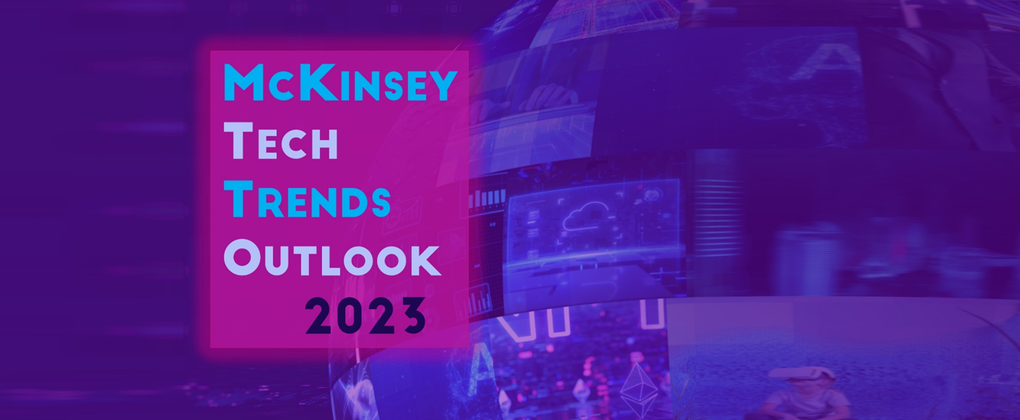
Which technology trends matter most for companies in 2023? The newest analysis by the McKinsey Technology Council highlights the development, possible uses, and industry effects of advanced technologies, released in July 2023, and outlined in this illustrative video:
After a tumultuous 2022 for technology investment and talent, the first half of 2023 has seen a resurgence of enthusiasm about technology’s potential to catalyze progress in business and society. Generative AI deserves much of the credit for ushering in this revival, but it stands as just one of many advances on the horizon that could drive sustainable, inclusive growth and solve complex global challenges.
To help executives track the latest developments, the McKinsey Technology Council has once again identified and interpreted the most significant technology trends unfolding today. While many trends are in the early stages of adoption and scale, executives can use this research to plan ahead by developing an understanding of potential use cases and pinpointing the critical skills needed as they hire or upskill talent to bring these opportunities to fruition.
To help executives track the latest developments, the McKinsey Technology Council has once again identified and interpreted the most significant technology trends unfolding today. While many trends are in the early stages of adoption and scale, executives can use this research to plan ahead by developing an understanding of potential use cases and pinpointing the critical skills needed as they hire or upskill talent to bring these opportunities to fruition.
Tech Talent Dynamics
Talent is a key source in developing a competitive edge. A lack of talent is a top issue constraining growth. There’s a wide gap between the demand for people with the skills needed to capture value from the tech trends and available talent: McKinsey survey of 3.5 million job postings in these tech trends found that many of the skills in greatest demand have less than half as many qualified practitioners per posting as the global average.
Below, McKinsey Technology Council lay out these considerations for 15 technology trends under 5 main categories, highlighting the technology description, 2022 equity investments in Billion USD, Job Postings Difference 2021-22, Adoption Score, Industries Affected, as well as Key Skill Areas Needed; making this a clear roadmap for companies and individuals to plan to be ahead of the competition.
Category One: The AI Revolution
1. Applied AI
Total Investments in 2022: $104 billion
Job Postings difference 2021-22: +6%
Adoption Score: 4
Models trained in machine learning can be used to solve classification, prediction, and control problems to automate activities, add or augment capabilities and offerings, and make better decisions.
Industries affected: Aerospace and defense, Agriculture, Automotive and assembly, Aviation, travel, and logistics, Chemicals, Construction and building materials, Consumer packaged goods, Education, Electric power, natural gas, and utilities, Information technology and electronics, Media and entertainment, Metals and mining, Oil and gas, Pharmaceuticals and medical products, Public and social sectors, Real estate, Retail, and Telecommunications
Key Skill Areas Needed: Machine learning, Computer Vision, NLP, Deep Reinforcement Learning
2. Industrializing Machine Learning (MLOps)
Total Investments in 2022: $3 billion
Job Postings difference 2021-22: +23%
Adoption Score: 2
A rapidly evolving ecosystem of software and hardware solutions is enabling practices that accelerate and derisk the development, deployment, and maintenance of machine learning solutions.
Industries affected: Aerospace and defense, Automotive and assembly, Electric power, natural gas, and utilities, Financial services, Information technology and electronics, Media and entertainment, Metals and mining, Oil and gas, Pharmaceuticals and medical products, Telecommunications.
Key Skill Areas Needed: Data Management, Model Development, Model Deployment, Live-mode Operations, Additional hardware tools and Technologies.
3. Generative AI
Total Investments in 2022: $5 billion
Job Postings difference 2021-22: +44%
Adoption Score: 1
Generative AI can automate, augment, and accelerate work by tapping into unstructured mixed-modality data sets to enable the creation of new content in various forms, such as text, video, code, and even protein sequences.
Industries affected: Consumer packaged goods, Financial services, Healthcare systems and services, Information technology and electronics, Media and entertainment, Oil and gas, Pharmaceuticals and medical products, Retail, Telecommunications
Key Skill Areas Needed: Python, Machine Learning, Regulatory Compliance.
Category Two: Building the Digital Future
4. Next-Generation Software Development
Total Investments in 2022: $2 billion
Job Postings difference 2021-22: +29%
Adoption Score: 2
New software tools, including those that enable modern code-deployment pipelines and automated code generation, testing, refactoring, and translation, can improve application quality and development processes.
Industries affected: Financial services, Information technology and electronics.
Key Skill Areas Needed: Java, Amazon Web Services, Continuous Integration, Micro Services, Cloud computing.
5. Trust Architectures and Digital Identity
Total Investments in 2022: $47 billion
Job Postings difference 2021-22: +16%
Adoption Score: 2
Digital-trust technologies enable organizations to build, scale, and maintain the trust of stakeholders in the use of their data and digital-enabled products and services.
Industries affected: Aerospace and defense, Consumer packaged goods, Education, Financial services, Healthcare systems and services, Information technology and electronics, Media and entertainment, Pharmaceutical and medical products, Public and social sectors, Retail, Telecommunications.
Key Skill Areas Needed: Risk Analysis, Regulatory Compliance, Computer security, Cryptography, Identity Management.
6. Web3
Total Investments in 2022: $62 billion
Job Postings difference 2021-22: +40%
Adoption Score: 1
Web3 includes platforms and applications that aim to enable shifts toward a future, decentralized internet with open standards and protocols while protecting digital-ownership rights. It’s not simply cryptocurrency investments, but rather a transformative way to design software for specific purposes. This shift potentially provides users with greater ownership of their data and catalyzes new business models.
Industries affected: Financial services, Information technology and electronics, Media and entertainment, Retail.
Key Skill Areas Needed: Risk Analysis, Regulatory Compliance, Stakeholder Management, Blockchain, Cloud Computing.
Category Three: Compute and Connectivity Frontiers
7. Advanced Connectivity
Total Investments in 2022: $118 billion
Job Postings difference 2021-22: +7%
Adoption Score: 4
Wireless low-power networks, 5G/6G cellular, Wi-Fi 6 and 7, low-Earth-orbit satellites, and other technologies support a host of digital solutions that can drive growth and productivity across industries today and tomorrow.
Industries affected: Aerospace and defense, Automotive and assembly, Aviation, travel, and logistics, Construction and building materials, Electric power, natural gas, and utilities, Healthcare systems and services, Information technology and electronics, Media and entertainment, Metals and mining, Oil and gas, Retail, Telecommunications.
Key Skill Areas Needed: Kubernetes, IoT, Network Engineering, Telecommunications.
8. Immersive-Reality Technologies
Total Investments in 2022: $16 billion
Job Postings difference 2021-22: +10%
Adoption Score: 1
Immersive-reality technologies use sensing technologies and spatial computing to help users “see the world differently” through mixed or augmented reality or “see a different world” through virtual reality.
Industries affected: Aerospace and defense, Automotive and assembly, Aviation, travel, and logistics, Construction and building materials, Consumer packaged goods, Education, Electric power, natural gas, and utilities, Healthcare systems and services, Information technology and electronics, Media and entertainment, Real estate, Retail.
Key Skill Areas Needed: Product Engineering, User Experience, Product Design, Computer Vision, Graphic Design.
9. Cloud and Edge Computing
Total Investments in 2022: $84 billion
Job Postings difference 2021-22: +12%
Adoption Score: 4
In cloud and edge computing, workloads are distributed across locations, such as hyperscale remote data centers, regional centers, and local nodes, to improve latency, data-transfer costs, adherence to data sovereignty regulations, autonomy over data, and security.
Industries affected: Aerospace and defense, Automotive and assembly, Aviation, travel, and logistics, Chemicals, Electric power, natural gas, and utilities, financial services, Healthcare systems and services, Information technology and electronics, Manufacturing, Media and entertainment, Pharmaceuticals and medical products, Retail, Telecommunications.
Key Skill Areas Needed: Infrastructure Management, Amazon Web Services, Microsoft Azure, Cloud Computing, Python.
10. Quantum Technologies
Total Investments in 2022: $2 billion
Job Postings difference 2021-22: +12%
Adoption Score: 0
Quantum-based technologies could provide an exponential increase in computational performance for certain problems and transform communication networks by making them more secure.
Industries affected: Aerospace and defense, Automotive and assembly, Aviation, travel, and logistics, Chemicals, Financial services, Information technology and electronics, Metals and mining, Oil and gas, Pharmaceuticals and medical products.
Key Skill Areas Needed: Quantum Computing, Cloud Computing, Blockchain, Machine Learning, Python.
Category Four: Cutting-Edge Engineering
11. Future of Mobility
Total Investments in 2022: $194 billion
Job Postings difference 2021-22: +15%
Adoption Score: 2
Mobility technologies aim to improve the efficiency and sustainability of land and air transportation of people and goods using autonomous, connected, electric, and shared solutions.
Industries affected: Automotive and assembly, Aviation, travel, and logistics, Electric power, natural gas, and utilities, Financial services, Oil and gas, Public and social sectors. Retail.
Key Skill Areas Needed: Automotive Industry, Maintenance, Logistics Operations, Manufacturing, Python.
12. Future of Bioengineering
Total Investments in 2022: $43 billion
Job Postings difference 2021-22: -19%
Adoption Score: 3
Converging biological and information technologies improve health and human performance, transform food value chains, and create innovative products and services.
Industries affected: Agriculture, Chemicals, Consumer packaged goods, Healthcare systems and services, Pharmaceuticals, and medical products.
Key Skill Areas Needed: Pharmaceuticals, gene therapy, CIRSPR, Genomics, Molecular biology.
13. Future of Space Technologies
Total Investments in 2022: $8 billion
Job Postings difference 2021-22: +16%
Adoption Score: 2
Advances and cost reductions across satellites, launchers, and habitation technologies are enabling innovative space operations and services.
Industries affected: Aerospace and defense, Telecommunications.
Key Skill Areas Needed: Aerospace industries. GIS, propulsion, Aerospace Engineering, Remote sensing.
Category Five: A Sustainable World
14. Electrification and Renewables
Total Investments in 2022: $288 billion
Job Postings difference 2021-22: +27%
Adoption Score: 2
Electrification and renewables help drive toward net-zero commitments and include solar-, wind-, and hydro-powered renewables and other renewables; nuclear energy; hydrogen; sustainable fuels; and electric-vehicle charging.
Industries affected: Agriculture, Automotive and assembly, Aviation, travel, and logistics, Chemicals, Construction and building materials, Electric power, natural gas, and utilities, Metals and mining, Oil and gas, Real estate.
Key Skill Areas Needed: Energy Production, Wind Power, Photovoltaics, Contract Management, Renewable Energy.
15. Climate Technologies beyond Electrification and Renewables
Total Investments in 2022: $86 billion
Job Postings difference 2021-22: +8%
Adoption Score: 2
Climate technologies include carbon capture, utilization, and storage (CCUS); carbon removals; natural climate solutions; circular technologies; alternative proteins and agriculture; water and biodiversity solutions and adaptation; and technologies to track net-zero progress.
Industries affected: Agriculture, Automotive and assembly, Aviation, travel, and logistics, Chemicals, Construction and building materials, Electric power, natural gas, and utilities, Metals and mining, Oil and gas, Real estate.
Key Skill Areas Needed: Regulatory Compliance, HVAC, Waste Management, Sustainability, Energy Efficiency.
- Learn more about McKinsey Tech Trends Outlook and download the full report from Here.
- Article Source: https://www.mckinsey.com









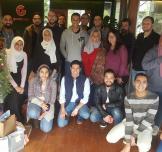






































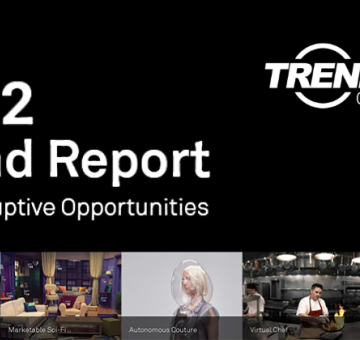
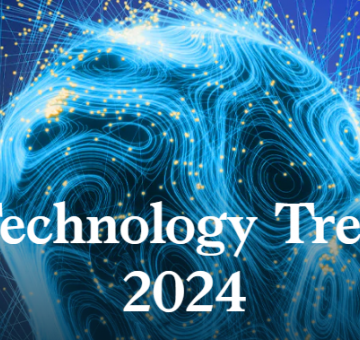


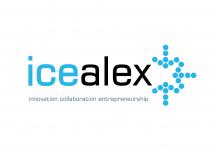










EgyptInnovate site is not responsible for the content of the comments